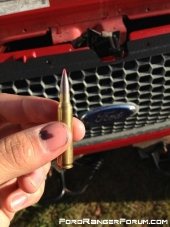
 1
1




SKIP books, get 'em while they're hot!!! Skills to Inherit Property
 5
5




Our inability to change everything should not stop us from changing what we can.
 1
1




SKIP books, get 'em while they're hot!!! Skills to Inherit Property
 6
6




Nothing is foolproof to a sufficiently patient fool!
I hate people who use big words just to make themselves look perspicacious.





Our inability to change everything should not stop us from changing what we can.





SKIP books, get 'em while they're hot!!! Skills to Inherit Property
 2
2




Nothing is foolproof to a sufficiently patient fool!
I hate people who use big words just to make themselves look perspicacious.





Our inability to change everything should not stop us from changing what we can.




SKIP books, get 'em while they're hot!!! Skills to Inherit Property
 2
2




Nothing is foolproof to a sufficiently patient fool!
I hate people who use big words just to make themselves look perspicacious.




SKIP books, get 'em while they're hot!!! Skills to Inherit Property





 1
1





 2
2




Nothing is foolproof to a sufficiently patient fool!
I hate people who use big words just to make themselves look perspicacious.




SKIP books, get 'em while they're hot!!! Skills to Inherit Property




Nothing is foolproof to a sufficiently patient fool!
I hate people who use big words just to make themselves look perspicacious.




SKIP books, get 'em while they're hot!!! Skills to Inherit Property
 1
1




Nothing is foolproof to a sufficiently patient fool!
I hate people who use big words just to make themselves look perspicacious.
 2
2




Mike Haasl wrote:Ahh, I think I see. So the snap cap is to protect the firing pin when testing if it can fire when the bolt isn't fully forward. Which would need to be watched for if I did neck sizing. Which isn't recommended for my autoloader anyway. Did I get that right?
“It’s said war—war never changes. Men do, through the roads they walk. And this road—has reached its end.”




 But it looks like I bought a good set-up from the fellow on craigslist a decade ago. I've got a single stage press, a powder measure (like your link), a little digital scale (not as fancy as your link), a powder trickler, a case length trimmer and the full sized die set on the way.
But it looks like I bought a good set-up from the fellow on craigslist a decade ago. I've got a single stage press, a powder measure (like your link), a little digital scale (not as fancy as your link), a powder trickler, a case length trimmer and the full sized die set on the way.
SKIP books, get 'em while they're hot!!! Skills to Inherit Property

 2
2




“It’s said war—war never changes. Men do, through the roads they walk. And this road—has reached its end.”




SKIP books, get 'em while they're hot!!! Skills to Inherit Property
 1
1





 1
1





 1
1






 2
2




“It’s said war—war never changes. Men do, through the roads they walk. And this road—has reached its end.”




SKIP books, get 'em while they're hot!!! Skills to Inherit Property
 1
1




Mike Haasl wrote:Thanks Gray, I had found that Barnes load chart already but none of the powders were available at the places I checked. Need to get to the next city down the road to see if they have any of them...
Didn't realize how you held the rifle mattered that much. Luckily the stand I'm shooting from is somewhat similar to the benches at the range.
Would any of the powders Gray listed be similarish to factory loads? Maybe then I'd know that I'm in the realm of proper pressure loads that already work fine in the rifle. Regarding the upkeep of the gun, grandpa used it to hold down barb wire fences and I've never tried to clean the innards of the gas mechanism. If it's in good shape it's due to only having a few hundred rounds go through it over the years...


|
What a show! What atmosphere! What fun! What a tiny ad!
12 DVDs bundle
https://permies.com/wiki/269050/DVDs-bundle
|




